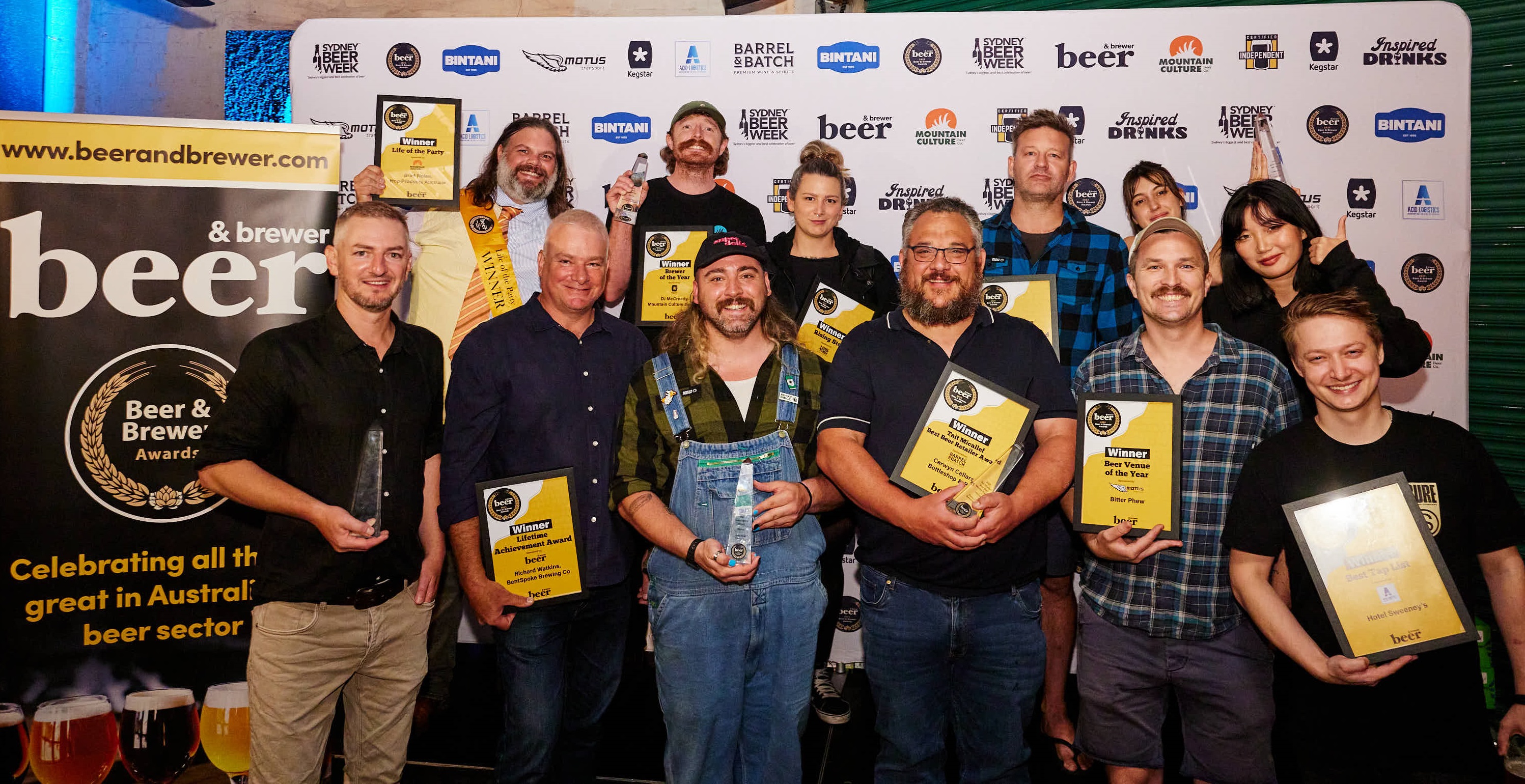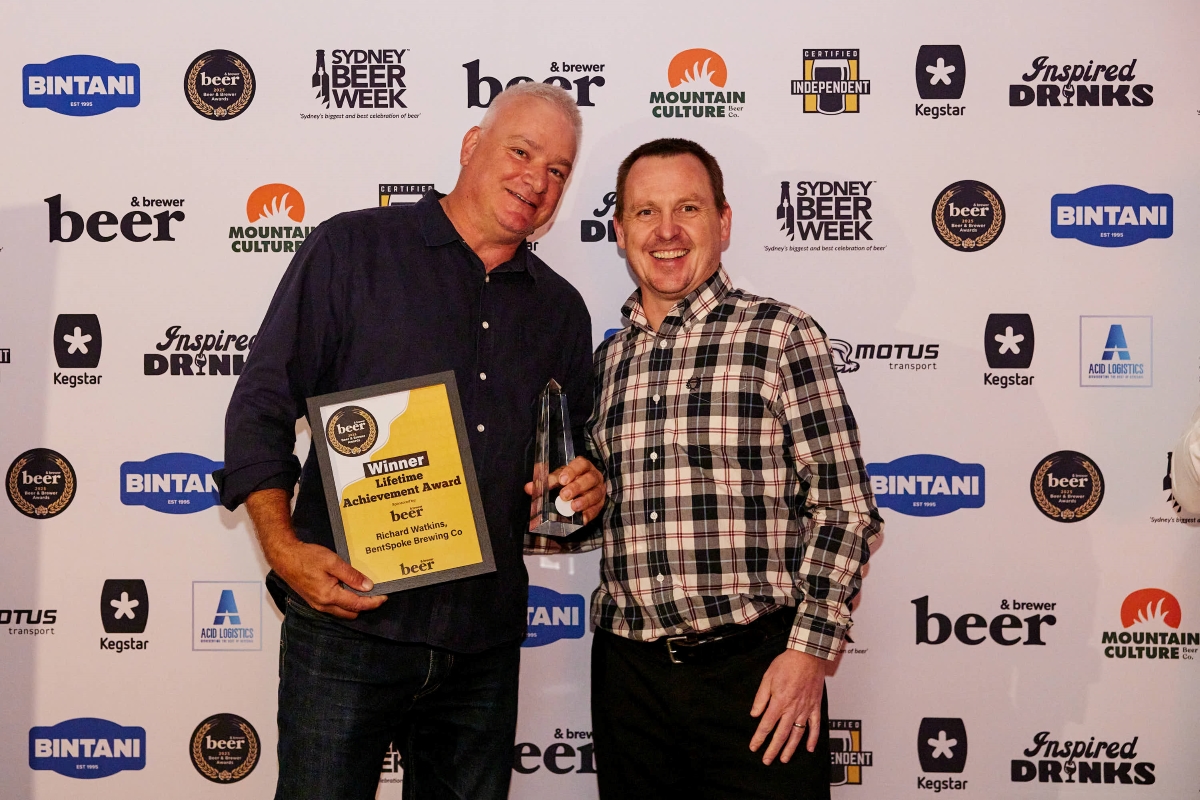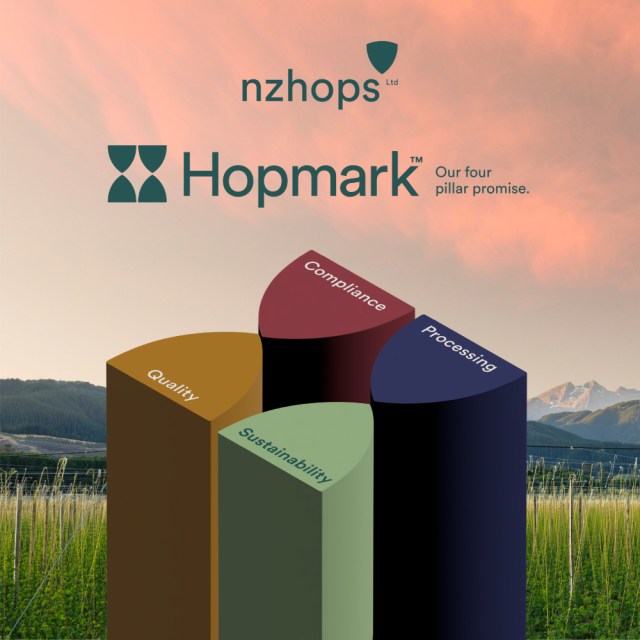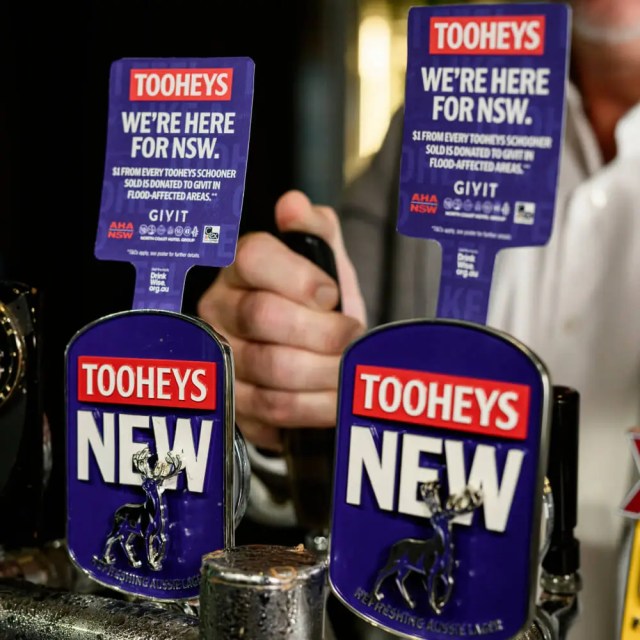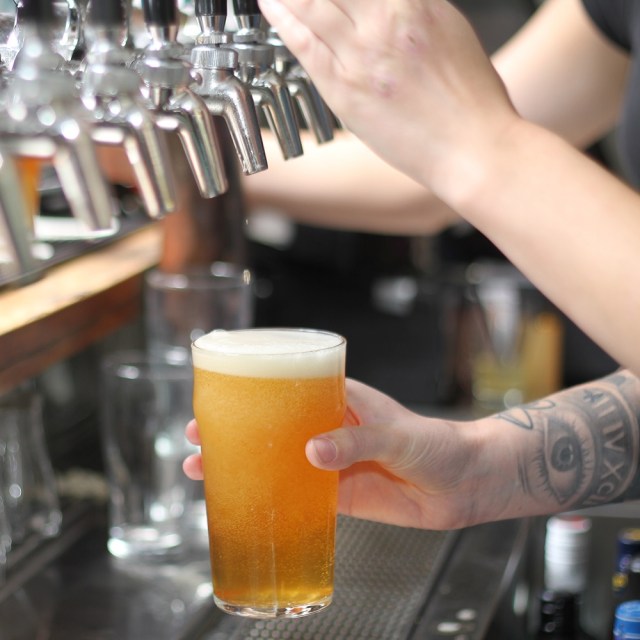
Beers made with Voyager Craft’s malts have made a habit of gaining acclaim but now the maltsters themselves have a gold medal of their own after their Schooner variety Veloria ale malt won the trophy for best pale ale malt in the world at the recent Malt Cup 2022.
The NSW Riverina-based Voyager Craft’s win makes them the Malt Cup’s first gold medallist to come from outside of the USA after the four-year-old event was opened up to maltsters from around the world last year. Alongside New Jersey’s Rabbit Hill Malt’s Pilsen malt (which also won Best in Show) and the Wyoming Malting Company’s Pale malt, Voyager’s Veloria was one of three gold medal winners from 58 entries in this year’s event that was dubbed “the battle of the base malts”.
Whilst it’s been rewarding for Voyager’s co-founder Stu Whytcross to see so many beers and spirits that feature their malts go on to wide acclaim, he told Beer & Brewer this accolade was particularly sweet.
“It is really special to us and also to our growers – the farmers that put in a lot of the work to deliver quality barley,” Stu said.
“We always get a thrill out of seeing brewers and distillers that use our malt pick up awards, but for this award to be judged on the quality of the malt alone is that extra bit special.
“To do it over in the States, alongside a lot of the pioneering craft malt houses and malt houses from around the world, is… well, we’re floating in the clouds at the moment.”

For maltsters, the Malt Cup is unparalleled in terms of identifying and benchmarking excellence. Just getting to the podium was a long and rigorously judged one for Voyager, with their malt submitted to the awards in October last year before going on a three-step journey to the eventual pale ale gold medal.
According to the US-based Craft Maltsters Guild that run the Malt Cup, all samples entered receive a malt certificate of authenticity report from Montana State University’s Barley, Malt, & Brewing Quality Laboratory. Entries that pass the scrutiny of that round go on to sensory evaluation with maltsters, brewers, distillers, researchers and Master Cicerones where judges evaluate malts in replicate via DraughtLab before a sensory report is generated. Should an entry make it beyond that phase to the Best of Show awards event, additional feedback is provided from judges as they examine malts in consideration of both sensory and quality data.
Voyager are yet to get this year’s feedback from the Guild, but on experience from submitting to the 2021 awards Stu said they will not only receive information on the likes of their malt’s Diastatic Power and fermentability, but also that same information for all other entrants.
“Which means we can see where we fit in terms of what’s happening in the market, particularly in the US which everyone talks about being a few years ahead of where things are at here.
“It’s nice to see what the brewers, who are dictating (trends in the market), are looking for in an ale malt or a pilsner malt. We can analyse where we fall in that spectrum.”
Malt Cup judge, Advanced Cicerone and former executive director of the Craft Maltsters Guild Jen Blair said: “Being able to say your malt won an award in the Malt Cup is great shorthand for communicating how your malt is different from not only other craft malt but also – and perhaps more importantly – commodity malt that the industry has been using by default.”

‘If you were a crop or a seed, that’s where you would want to be growing.’
While Stu said all the growers Voyager source barley from are “phenomenal”, Veloria’s win allowed him the opportunity to make special mention of Riverina regenerative and certified organic farmers Chris and Sam Greenwood who grew the parcel of Schooner barley that won gold.
“We’ve taken many brewers (to the Greenwood’s farm) and when they see the way they farm, and how passionate they are about conservation, soil regeneration and respect and care for the environment, they are moved.
“When you walk on their farm and pick the soil up and smell it, well, if you were a crop or a seed, that’s where you would want to be growing.
“It’s extra special, because not only do we believe that it’s the best way to farm and what’s best for the environment, but that all of that comes through to the final product.
“We can’t make great malt without great barley. The way that it has been farmed has had a massive influence in us being able to do this.”
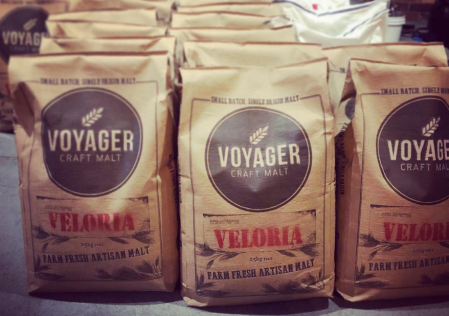
Veloria: an ‘attempt to showcase the unique flavour characteristics of Schooner’
As keen home brewers, Stu and fellow founder Brad Woolner did plenty of “backyard experiments” prior to launching Voyager seven years ago. During those trials they determined, that from a flavour point of view, there was something “very special” about Schooner barley despite it being the time when the variety was being superseded by a lot of the newer bred varieties.
In turn, Veloria was their first malt and was designed, as Stu said, to be their “attempt to showcase the unique flavour characteristic of Schooner”. It’s now their biggest selling product and from a client base of over 300, about half of those are using it in some capacity.
“During those experiments we were doing analysis on it alongside imported malts – like Maris Otter and Golden Promise – and Schooner was really holding its own alongside those.
“(Veloria) goes through a fairly long kilning process to really drive that colour up. It’s quite sweet, full bodied and has a lot of the darker pale malt characters in it – like biscuit and honey.
“I think this award is also recognition for those brewers that have seen potential in it and seen the flavour in it.
“It’s a malt that doesn’t yield anywhere near as high as some other new world malts that are around. So brewers are buying it and taking a hit on extract but the reason they’re buying it is for the unique flavour characteristics. That’s allowed us to continuously produce it.”
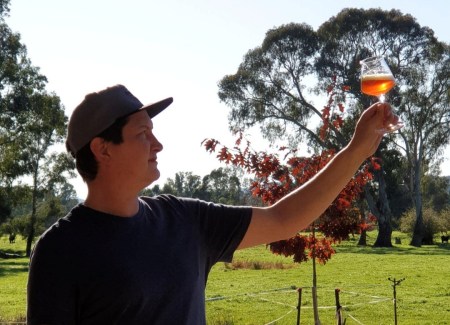
We’re so lucky that we can make a 100 per cent Australian beer now and not have it as a lesser product.”
Nathan Munt, King River Brewing
One of those, and who has used Voyager’s Veloria almost ever since it was first available, is Nathan Munt (pictured directly above), head brewer at King River Brewing in Whitfield in Victoria, who uses it solely in a lot of his wet hop beers and pale ales.
“It’s a beautiful malt. It leaves a beautiful tinge of honey sweetness in the back of the palate. With the extract base malts, where you’re just trying to get as much alcohol out of the grain and pump it up with other specialty malts, they’re just not as well rounded. When you brew with a malt that you can use 100 per cent of you get a more nuanced and elegant flavour and that’s what made me love it.
“I couldn’t be happier for (Voyager). (The award) is everything they’ve always worked towards.
“Holistically they’re all about the farmers and creating a grain to beer equivalent of paddock to plate. For a group of people that really push that ethos, (the gold medal) is the highest honour.
“They’re really showing that what they’re doing here is really recognisable globally. Hopefully some more people turn their heads a bit more and start looking at malt as an amazing and primary ingredient in the beer that they’re drinking.
“We’re so lucky that we can make a 100 per cent Australian beer now and not have it as a lesser product.”

‘They really highlight the growing emphasis on the importance of malt in craft brewing‘
For so long hops have been the heroes of craft beer and if you pick up a can you’ll more often than not be able to read plenty about that particular ingredient. Yet if malt actually manages to get a mention it’s usually perfunctory and along the lines of the hops being allowed to shine care of a “solid malt backbone” or some such phrase.
But for Stu, he’d like to see the craft beer industry talk just as much about the malt and the varieties and how they were farmed as they currently do about the hops.
“For me, these awards, they really highlight the growing emphasis on the importance of malt in craft brewing.
“I think brewers and distillers are realising the importance of what is essentially their main ingredient – when you look at everything that malt brings to a beer: the alcohol; the colour; the mouthfeel; the body.
“What these awards can help do is provide craft maltsters with a real lexicon around terminology to describe what malt is. Rather than just say ‘this is malty’ or ‘this is biscuity’, really dive in deep to come up with some great descriptions around malt flavour.”
You can read our recent feature on craft malt here, where we spoke with Stu at Voyager, as well as other maltsters and brewers, about how it most certainly is craft malt’s time to shine.




